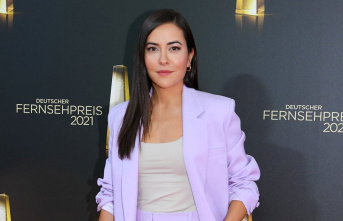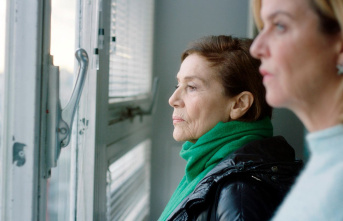For adults, sunglasses have long been an indispensable fashion accessory in summer (sometimes also in winter), sometimes even something of a status symbol. Many designers have their own line of sunglasses on the market. The nose bicycles with the round, tinted, angular or mirrored lenses are actually on the road on behalf of your health. The coating of the lenses is intended to prevent too much harmful UVA, UVB and UVC radiation from hitting the sensitive retina of the eye and damaging it in the long term. Basically, sunglasses are the counterpart to sunscreen, which protects the skin from sunburn. So it's clear: Even small children should wear sunglasses - sooner than many people think.
In an interview with the stern, Matthias Köste (54), managing director of the children's glasses specialist Pricon, explains why sunglasses for children are much more than just a fashion accessory, from what age they belong on the nose and what details parents must pay attention to before buying should.
Mr. Köste, why are sunglasses important for children? For two reasons. On the one hand, you have to know that humans use up 75 percent of their sun time within the first 18 years of life. Or to put it another way: children and young people usually spend a lot of time outside and are exposed to a disproportionately high amount of UV radiation in this comparatively short time. Conversely, this also means that sunglasses are much more important for children than for adults. In addition, the eye lenses are significantly lighter, especially in smaller children. The lenses only gradually become darker.
What does this mean specifically for young children's eyes? It simply means that in young children, much more UVA and UVB radiation from sunlight hits and penetrates the retina. They are significantly more at risk. And ultimately, this also favors well-known eye diseases such as cataracts or others.
So should parents protect their children's eyes with sunglasses from an early age?No. At this age, the little ones do not normally lie in the sun for long periods of time, but rather in a pram or cart, where they are then protected by a little umbrella. Otherwise they have hats with little umbrellas. The parents therefore ensure that the children's eyes are not permanently exposed to UV radiation. Once the kids can walk, it becomes harder to keep them in the shade. From then on, I think it makes sense to wear sunglasses.
You should probably not go for the first model that comes along. What is particularly important to pay attention to? First of all, the glasses must of course protect 100 percent against UVA and UVB radiation, i.e. have appropriate filters on the sun protection lenses. The material of the frame is just as important. It should be robust and flexible and be able to take part in everything if possible so that it doesn't break on the first trip. Parents should also make sure that the frames have been specially developed for children. Adult models that are simply scaled down to a child's size usually don't work. This is mainly due to the fact that the bridge of the child's nose is not yet properly developed at the beginning. The entire physiognomy has to develop first. Therefore, sunglasses must be specifically designed for these face sizes. Then it's about parameters such as the nose pads, the width of the nose bridge and whether the point of vision is really at the level of the pupil.
Now the selection of sunglasses for children is large. Everything is available, from no-name products to designer models. What should you pay special attention to before buying to make sure that the glasses meet the most important requirements?First of all, you should know that sunglasses are part of the PPE (personal protective equipment, editor's note). This means that at least one CE mark and corresponding information on ISO standards must appear on the frame, on the packaging or on the instruction leaflet. As soon as the sunglasses can be glazed, with prescriptions to correct ametropia, they become a class 1B medical device. This is where the CE markings from the Medical Devices Act become relevant. Basically, in my experience, you can rely on the information on UVA and UVB protection. Especially if the sunglasses are bought in specialist shops.
What role do the colors and tints of the lenses play? The tint should be somewhere between 70 and 80 percent for children's sunglasses.
How dangerous are scratches on the glasses, which children inevitably and quite quickly develop? Where the scratch is, UVA or UVB radiation can get through because the coating is destroyed at that point. Basically, the glasses have to be replaced at this point.
What does the notice that sunglasses have an anti-reflective coating on the back mean? This is about the scattered light that enters the glasses from behind and thus bypasses the actual protection. Some glasses are therefore anti-reflective on the back to prevent these UV rays from being reflected directly onto the eyes.
Sunglasses are divided into five different filter categories or tint levels. The decisive parameter is the light transmission. At tint level 0, the lenses only reduce solar radiation by a maximum of 20 percent. In category 4, on the other hand, only between three and eight percent of the sunlight comes through the lenses. In our latitudes, experts recommend sunglasses for children with filter category (tint level) 2. For vacations by the sea or in the mountains, it may also be a model with filter category 3. Here is an overview:
tint level
glare protection
tint
use
0
up to 20% of the light is absorbed
light
as corrective glasses for sensitive eyes
one
up to 57% of the light is absorbed
light
for overcast and slightly cloudy days
2
up to 82% of the light is absorbed
middle
for sunny days in our latitudes
3
up to 92% of the light is absorbed
middle
for summer holidays by the sea or in the mountains
4
up to 97% of the light is absorbed
stark
for extremely light-intensive regions such as high mountain glaciers or oceans (not suitable for traffic)
This article contains so-called affiliate links. Further information are available here.











